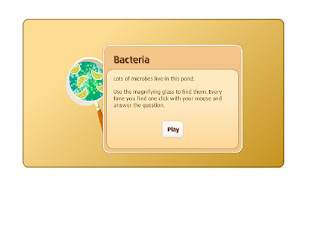¡Bienvenid@s a esta nueva asignatura!
En este espacio iré aportando una serie de recursos relacionados con los temas que vamos estudiando, para que se repase y trabaje en casa de una manera más entretenida.
* Se irá actualizando a medida que vayamos avanzando
--> Diccionario Inglés <-> Español <--
UNIT 1: "BODY SYSTEMS"
--> Diccionario Inglés <-> Español <--
UNIT 1: "BODY SYSTEMS"
En esta unidad, revisaremos y aprenderemos, muchas más cosas que el año pasado, acerca del cuerpo humano.
Estudiaremos las tres funciones vitales que realiza todo ser vivo: nutrición, relación y reproducción; centrándonos en los sistemas y órganos que intervienen en cada una de dichas funciones.
To start this unit...Play with a part of your body in the next link
Click here
Human body systems
Parts of the body
NUTRITION
The process of nutrition includes the circulatory, excretory, respiratory and digestive systems.
- Circulatory system
- Respiratory system
--> Exercise: respiratory and circulatory systems:
- Excretory system
- Digestive system
INTERACTION
The nervous system control everything we do. The brain sends information to different part of the body via the nerves. It also receives information; our senses detect information from the environment and the nerves send this information to the brain.
- Nervous system
- Senses
- Skeleton and muscles
REPRODUCTION
Our reproductive system makes it possible for us to have babies. While the other body system are the same for men and women, the reproductive system are different
UNIT 3: "LIVING THINGS" *
UNIT 4: "ANIMALS"
Summary (Resumen de la unidad)
UNIT 2: "LOOKING AFTER YOURSELF"
En esta unidad vamos a aprender diferentes hábitos saludables y no saludables, y comprenderemos lo importante que es cuidar nuestro cuerpo física y mentalmente.
Healthy habits
- Eating habits
 |
| Food vocabulary |
- Benefits of exercise
Photos (Summary)
UNIT 3: "LIVING THINGS" *
En esta unidad vamos a repasar y conocer más en profundidad las características de los seres vivos, diferenciándolos de los seres inanimados. En concreto, aprenderemos cómo están organizados los seres vivos, los procesos que llevan a cabo y cómo se clasifican.
Unicellular and multicellular living things
How are living things organised?
How are living things classified?
UNIT 4: "ANIMALS"
**Huella ecológica**
En esta unidad vamos a conocer las características de los animales vertebrados y de los invertebrados. En concreto, nos centraremos en cómo son los procesos de nutrición, respiración y reproducción; en los diferentes grupos de vertebrados. Posteriormente, conoceremos seis grupos de invertebrados.
Vocabulary
Vertebrates nutrition
Vertebrates respiration
Vertebrates reproduction
UNIT 5: "PLANTS"
En esta unidad vamos a recordar las partes de una planta, algunos tipos y qué necesitan para vivir. Además aprenderemos cómo es a alimentación, respiración y reproducción de las plantas. Por último, sabremos cómo clasificarlas según sus características
Photosynthesis
Plant reproduction
Plant classification
Summary (Resumen de la unidad)
UNIT 6: "ECOSYSTEMS"
En esta unidad aprenderemos todo lo que tiene que ver con los ecosistemas. En concreto, veremos los elementos que componen todo ecosistema y las relaciones que existen entre los seres vivos que la constituyen.
UNIT 7: "MATTER, MATERIALS AND FORCES"
Food chains and food webs
Ecosystems
Summary (Resumen de la unidad)
LOSS OF BIODIVERSITY
UNIT 7: "MATTER, MATERIALS AND FORCES"
En esta unidad ampliaremos nuestro conocimientos sobre los materiales y la materia. Recordaremos las propiedades de la materia y conoceremos los conceptos de masa y volumen. Además, nos adentraremos en el mundo de las fuerzas.
Physical and chemical changes
*ACTIVITY --> You are going to discover on your own the differences
between physical and chemical changes.
Follow the next steps:
1. Watch
this video carefully and try to learn as much as possible:
the next steps:
2. Demonstrate
what you have learnt in the following website:
3. Download
this document, complete it and paste it on your notebook: CLICK HERE
Mass, volume and density
Mixtures
Recycling
Forces
Summary (Resumen de la unidad)
PROJECT: "ECO-INVENTIONS"
*A continuación se encuentran los recursos necesarios para llevar a cabo el proyecto
UNIT 8: "ENERGY"
You have to create, in groups, an original complex machine that needs renewable energy to work
CONDITIONS:
1. Use at least 2 simple machines
2. It must work with renewable energy
3. It must be related to 1 or more
types of energy.
*A continuación se encuentran los recursos necesarios para llevar a cabo el proyecto
UNIT 8: "ENERGY"
En esta unidad comenzaremos por conocer las fuentes de energía: las fuentes renovables y no renovables. Posteriormente aprenderemos acerca de los diferentes tipos de energía y profundizaremos en tres de ellos: la energía luminosa, la energía térmica y la energía sonora.
Renewable and non-renewable sources
Types of energy
- Light energy
- Thermal energy
- Sound energy
UNIT 9: "Machines"
En esta unidad conoceremos las máquinas simples y la relación que tienen con la energía
Todos los recursos AQUÍ
Todos los recursos AQUÍ








































D. Carlos me gusta mucho tus juegos, aprendo mucho con ellos.
ResponderEliminarEste comentario ha sido eliminado por un administrador del blog.
ResponderEliminarI like your videos and games too
ResponderEliminarI like your games and videos too
ResponderEliminarD.Carlos los juegos y los videos me están ayudando a repasar para el examen
ResponderEliminarD. Carlos con los juegos y los videos me han ayudado a repasar para mañana el examen
ResponderEliminarI like your game and videos, there are very interesting. your dictionary are excelent
ResponderEliminarI like your game and videos, there are very interesting. your dictionary are excelent
ResponderEliminar